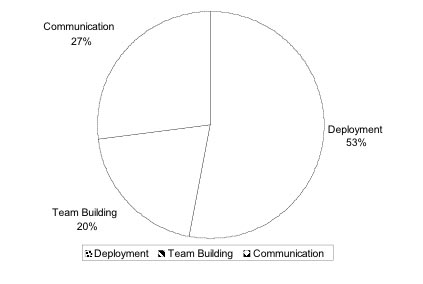 |
February 2010
|
February 2010 // Volume 48 // Number 1 // Tools of the Trade // v48-1tt4
Cooperative Extension Training Impact on Military Youth and 4-H Youth: The Case of Speak Out for Military Kids
Abstract
Extension needs new venues to promote their programming skills to unfamiliar audiences. One new audience Extension is currently reaching is military children. By partnering with Operation: Military Kids to offer a Speak Out for Military Kids training, Extension supports military children and document changes in the behavior of this audience. Measuring perceptions of both military and nonmilitary youth who participated in a Speak Out for Military Kids (SOMK) training highlight the benefits of such a program. Results indicated that SOMK was an effective tool for Extension to use to reach out to military youth and communicate their message.
Introduction
The War on Terrorism has changed the course of United States military service, especially for National Guard and Reserve members who have experienced increases in the number of deployments (Kapp, 2005). When National Guard and Reserve members are mobilized, their youth change from being civilian to military youth. The lives of these youth become disrupted and turned upside down, though they still look the same within their communities, to friends and to their teachers. These youth require support from their communities to assist with information and life skills as they strive to cope with the parent-child separation (Operation: Military Kids, 2004).
Operation: Military Kids (OMK) is one such support system that is reaching out to military youth through local 4-H Youth Development programs operated by the Cooperative Extension Service. One component delivered by OMK is Speak Out for Military Kids (SOMK), an educational program designed to raise awareness of the unique stressors and challenges youth face when their parents are deployed during times of conflict and war. SOMK engages military and nonmilitary youth in an interactive training to make a positive difference for military youth.
While programs for military youth have not been a traditional purview of Extension, Extension educators have the unique skills to help youth cope with parent-child separation. Here we present the benefits of SOMK as a tool to reach out to military youth.
Method
Extension, in partnership with Operation: Military Kids, brought military and nonmilitary youth together for a weekend SOMK training. Modules included military deployment, military culture, team building, 4-H culture, developing effective presentations, communicating the military message, and OMK overview. Modules were presented by Extension educators and key military personnel.
Fifteen youth, ages 12 to 19, participated in the training. These included five nonmilitary 4-H youth and 10 military youth whose parent(s) have been deployed in the global war on terrorism, but who were not members of 4-H. Using a 5-point Likert-type scale covering modules of the training, participants' future plans for SOMK, and participants' perceptions of the program were evaluated.
Results
Survey results indicated that SOMK was an effective tool for Extension to utilize to reach out to military youth and communicate their message.
Communication and Presentation Skills
Figure 1 shows that 80% of the youth reported that the module on preparing a presentation was very useful; 100% reported that methods of delivering an SOMK message to their communities were at least useful; 100% declared that effective presentation content was at least useful; and 80% declared working with the media was at least useful. Communication and presentation contents included dealing with conflict, presenting with confidence and assurance, body language, being in charge, and using positive reinforcement. The working with media segment focused on how questions are framed, which ones to respond to, and how to respond when in doubt.
Youth demonstrated skills in SOMK message communication and presentation by producing group PowerPoint slides with accompanied audio on the impact of military deployment on youth in military families. These were then transformed into a DVD for public use. During the training, participants expressed that their communication and behavior are hindered when their parents are deployed. The following behavioral changes were identified: either talking a lot or feeling shy to talk, becoming easily angered, withdrawing from their peers, and reading too much into what another person says to them in order to discern whether the person is being empathetic or just prying.
Figure 1.
Communication and Presentation
Skills

Training Outcome
Figure 2 shows that issues of military deployment were ranked as the most important to the youth from the SOMK training. Deployment occurs in stages and impacts children and youth at every level of the cycle, creating more challenges for military families. The military deployment module covered the stages of deployment with the accompanying impact on military families, especially youth. The discussion exposed 4-H youth to the lifestyles of non-career military families, while youth from military families took the opportunity to tell their peers how they feel when their parents are deployed.
Figure 2.
Training Outcomes

Conclusion
While working with military children has not traditionally been the purview of Extension, the unique stressors and challenges youth face when their parents are deployed during the war on terrorism calls for Extension to reach out to these children (Ferrari, 2005). Providing an opportunity for 4-H youth to interact with military children in a project-oriented setting such as Speak Out for Military Kids proved to be an effective tool for Extension to support military children. The well-developed Extension infrastructure at state and community levels and Extension educators' expertise and experience of working with youth provides a unique and rich environment for involving military and nonmilitary youth in future SOMK programs in a mutually-beneficial partnership.
References
Ferrari, T. M. (2005). Extension's response to an un-natural disaster: Enlisting your support for military youth and families. Journal of Extension [On-line], 43(4) Article 4COM1. Available at: http://www.joe.org/joe/2005august/comm1.shtml
Kapp, L. (2005). Recruiting and retention: An overview of FY2004 and FY2005 results of active and reserve component enlisted personnel. Library of Congress Washington DC Congressional Research Service ADA458309.
Operation: Military Kids Manual. (2004). Retrieved March 18, 2007, from: http://www.usda-army-ydp.org/omk/




